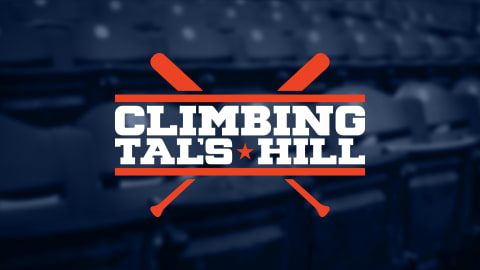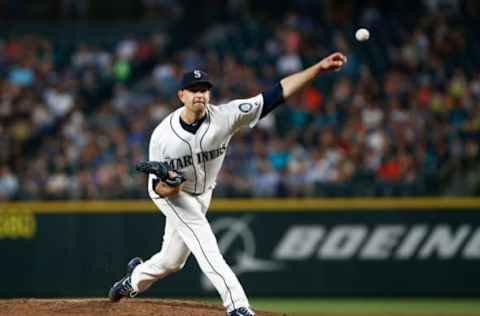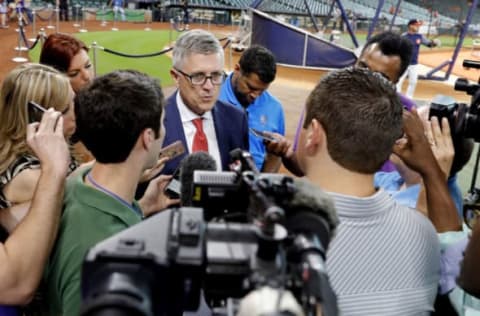Astros aren’t budging on top prospect Forrest Whitley


For better or worse, the Astros appear reluctant to include their top pitching prospect in trade discussions.
Prospects in baseball are a tricky business. Not all pan out, or as successful as originally forecasted. As the Astros learned from their own rebuild, it takes a balance of young, homegrown talent combined with established veterans to contend for a World Series title. There are times when a team needs to trade prospects for proven major league players. The trade for Justin Verlander in August 2017 stands out as a recent example.
That said, the Astros are probably right in not including top pitching prospect Forrest Whitley in trade negotiations. As you may have heard, the Mariners traded their best starting pitcher, left-hander James Paxton, to the Yankees on Monday afternoon. Houston’s refusal to include Whitley in their offer for Paxton appears why Seattle instead chose New York’s package of Justus Sheffield, Erik Swanson, and Dom Thompson-Williams. I have a feeling a little bit of the trading within the division dynamic played a role in the request.
Source: #Astros’ refusal to include Forrest Whitley in their offer for James Paxton precipitated #Mariners decision to trade Paxton to #Yankees. @MLBNetwork @MLB
— Jon Morosi (@jonmorosi) November 19, 2018
There is no doubt that Paxton was one of baseball’s better starters last season, when healthy. He would’ve been a fine replacement for Dallas Keuchel as Houston’s best left-handed starter. However, the Astros are clearly betting on Whitley’s potential over the next six seasons than the remaining two seasons on Paxton’s contract. For the record, Whitley on Monday night did seem to appreciate the stance of general manager Jeff Luhnow to not include him in the trade negotiations.

The long-term value versus short-term gain
The crux in most trade discussions is the determination of long-term value versus short-term gain. For Houston, Paxton would’ve checked off a box in the short-term box as he is under contract through the 2020 season. A hypothetical 2019 rotation with him, Verlander, and Gerrit Cole could’ve been at top contender-level. Depending on the outcome of Verlander and Cole’s upcoming free agency a year from now, the 30-year old starter would’ve offered a nice buffer in 2020. But the primary concern with Paxton remains his durability as he recently finished with his highest major league inning total in a single season (160 1/3 IP).
Whitley’s long-term value is potentially greater than Paxton’s. It could also finish the other way around. Again, here is where someone inserts something useful about prospects and the risks involved. Pitching prospects, in particular, are a gamble. Pitching, in general, is a gamble as we never know when that arm will finally give out. But Whitley does have future value, if his development doesn’t take another hit. His fastball can reach the high nineties and features some cutting movement. Among his secondary pitches, his curveball is particularly promising as it has shown some nice breaking action. He also features a slider and changeup to round out his arsenal. The stuff is there that makes teams drool over prospects. Again, a gamble, but teams are angling for Whitley in trade negotiations for good reason. At the end of the day, the Astros chose the long-term value over the short-term gain.

Don’t look for a change on the stance
The Astros’ stance on Whitley, regardless of our personal feelings towards prospects, isn’t unexpected. FanGraphs currently has the promising right-hander as baseball’s top pitching prospect. He is consistently ranked the top prospects across the sport as the 21-year old comes with top of the rotation material and lofty expectations. It was only natural that the Mariners ask for Whitley in trade negotiations. Most teams, including the Marlins with J.T. Realmuto still on the market, will keep pestering the Astros about Whitley with the hope that Luhnow will finally cave. I don’t expect him to cave any time soon.
Free agent Wilson Ramos more practical option for catcher. dark. Next
Only time will tell if Whitley is successful at the major league level. He has a lot to prove in 2019 as his 2018 season was basically a wash. If you’re into silver linings, then find peace knowing his absence wasn’t due to an arm injury. I’d like to believe he has a shot to make the club out of spring training, albeit unlikely. But I do expect him to start at some point for the Astros in 2019, if healthy.